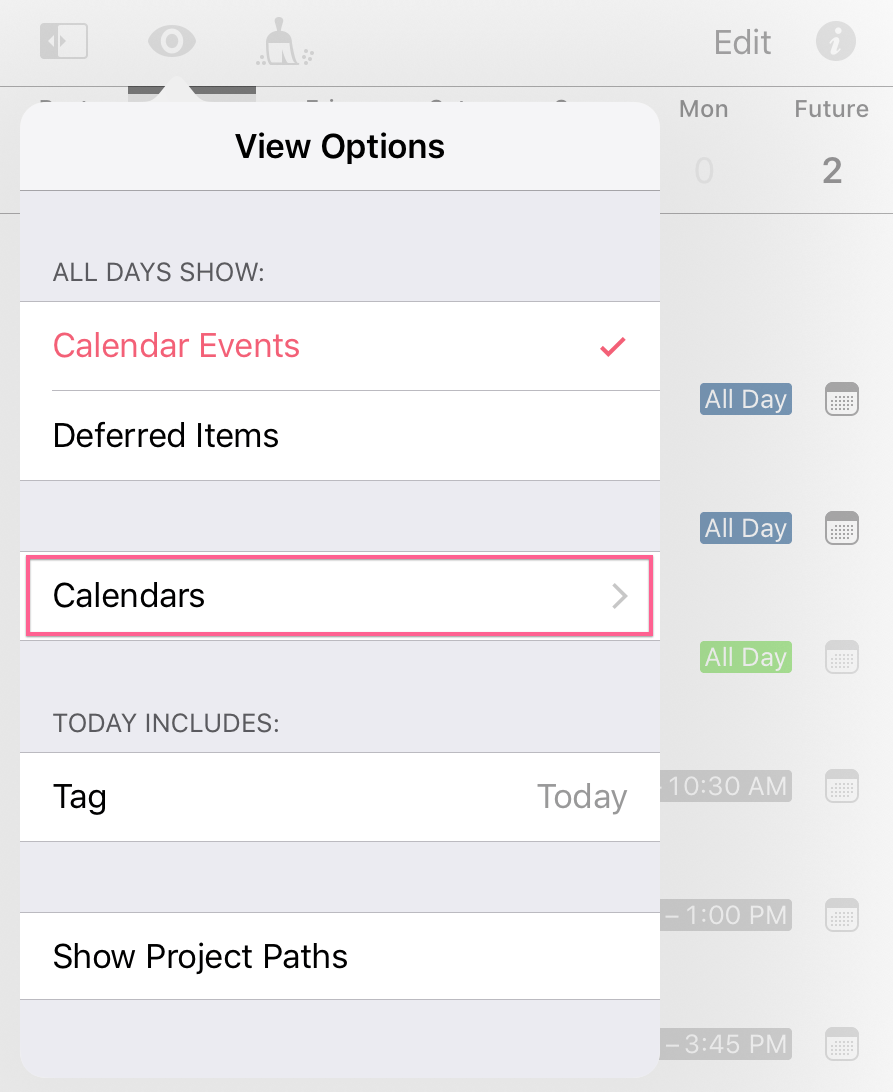

- Forecast tag omnifocus 3 2019 how to#
- Forecast tag omnifocus 3 2019 full#
- Forecast tag omnifocus 3 2019 pro#
- Forecast tag omnifocus 3 2019 plus#
- Forecast tag omnifocus 3 2019 mac#
OmniFocus achieves a plus here by offering multiple sync options.

If all you care about is making sure the tasks are always available, then both applications will handle the job well. Synchronization is now very stable with both Things and OmniFocus. Even after addition, Things still don't have the ability to sync quickly or easily, at least initially.įortunately, a long way has passed. OmniFocus provides a strong synchronization feature, but Things did not quickly add this feature. Ability to seamless syncīack at a time when both apps were coming in, sync wasn't the common feature these days. You may have recurring tasks and even recurring projects, but they are somewhat more limited than what you find in OmniFocus.Ĭonclusion : OmniFocus wins Things in terms of features. While OmniFocus has endless customizing tasks, Things seem more basic. That makes the user a little bit less overwhelmed. On Things, the amount of metadata displayed is less. You will also see your calendar events with Things and it will display information similar to what is available on OmniFocus. For example, the Today tag can indicate the priority of a task. Tags can also give your task some GTD context or you can also use them to estimate rough time. Because Things doesn't have built-in priorities, you can simulate them with tags. To get the most out of you, you'll want to customize these things the way you work. Things has only one version and comes with some integrated tags.
Forecast tag omnifocus 3 2019 pro#
If you're new to OmniFocus, these can be overwhelming, so you might not want to dive into the Pro version right away. These are powerful tools and allow you to accurately shape what parts of the project you see and when it's due. The Pro version of OmniFocus provides Custom Perspectives. You can also specify by tag, where any actions available with this tag are displayed. This not only shows you the tasks that are available today, but also what is about to happen and also the events on the calendar. If you use due dates to determine what to do on a given day, the Forecast view will come in handy. You have access to Projects, Tags, and integrated views, allowing you to view your work in a variety of ways. For many, the Standard version will be fine. OmniFocus is available in Standard and Pro versions. After all, a task management application can't be called good if it doesn't have the features you need. This is the real confrontation between the two applications. Things simply look better and may be easier to use for some people. The look of OmniFocus does not seem to be a problem at all. It also makes good use of white space, with a cleaner and more friendly overall interface than OmniFocus.Ĭonclusion : Things win in this respect. If visual progress indicators bring you back to the app, that's a big plus. When you complete tasks inside a project, you'll see a circular indicator begin to fill.Īs mentioned before, the best to do tool is what you actually use. Projects in Things are built on the level of completion. This gives OmniFocus an interesting look (you can see this on macOS more clearly than iOS). If you are the same, OmniFocus will definitely appeal to you.Īlthough OmniFocus 3 has rebuilt most of its applications from scratch, it has retained important features for many years. Some people like the applications they use to look professional. Therefore, the design and user interface of these applications is one of the most important aspects. Design and user interfaceĪn application cannot be useful if you do not like using it. Because this is a personalized aspect, it is impossible to say whether one or the other has a better approach. This allows you to pin an item to today's list.Ĭonclusion : The two applications are tied in this regard. The application also takes a more comfortable approach to tasks, as illustrated by the Today flag. This allows you to organize tasks step by step. Things are always focused on reviewing your tasks as Projects. The main difference is that you can have multiple tags for each task, which is impossible with Contexts.
Forecast tag omnifocus 3 2019 how to#
This gives users more freedom on how to organize tasks. OmniFocus 3 has replaced Contexts with Tags. For example, they can be Home, Office or Email. The original version of OmniFocus used Contexts, allowing you to organize your work according to the location or tools you need to complete the task.

When it was first launched, OmniFocus focused heavily on David Allen's Get Things Done (GTD) system.
Forecast tag omnifocus 3 2019 full#
You just don't take full advantage of this tool, if you use it as a simple to-do list. But that doesn't mean you can't simply use the app. OmniFocus comes with many features and can be a bit complicated. Although there are many things in common, OmniFocus and Things have different approaches to help users organize their life and work. Like the way people work is not the same, so is the application.
Forecast tag omnifocus 3 2019 mac#
Is OmniFocus or Things the best Mac task manager?


 0 kommentar(er)
0 kommentar(er)
